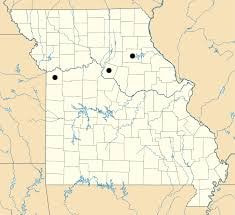This Article was published in the Martinez News-Gazette on 7/01/2017 Aaron Rice's Headstone - July 4th, 2017 Aaron Rice's Headstone - July 4th, 2017 On July 31, 1906, Aaron Rice (an African American who was one of the first freed slaves to vote in Napa, California) was interred in the Contra Costa County’s Potter’s Field of Alhambra Cemetery, where they buried the impoverished, unclaimed, and discriminated. His gravesite borders the more prominent section of the cemetery where William and Louisa Rice (his former slave owners) are also buried. Our surprise in finding Aaron’s headstone (being one of only four to have survived) and the uncovering of his remarkable story has resulted in his becoming very special to us. However, it has left us with a couple of questions, which we have so far been unable to answer. 1) Who paid for his headstone? 2) What does the phrase “The Faithful” refer too? For the enslaved American, census data did not include them until after slavery was abolished. Therefore, to tell Aaron’s story we had to rely on information from authored books, various organizations, a written oral account, along with whatever official documents could be found, in order to piece together Aaron’s life prior to 1860.  Wikipedia - Caswell County, NC Wikipedia - Caswell County, NC We found through documentation that Aaron Rice was born, January 1819 in Caswell, County, North Carolina to Robert and Dilcy Rice. Aaron and his family were the property of Archibald and Sally Jane Rice, who owned a cotton farm.  Historic Site - Somerset Place, NC Historic Site - Somerset Place, NC In the early 1800s in North Carolina, enslaved Americans would work on small to medium sized farms, unlike their counterparts on the larger plantations found throughout the rest of the South. As a result, they were responsible for a larger variety of jobs including carpentry, fieldwork, and domestic duties. They were also afforded more interaction with other enslaved Americans on other farms. Perhaps it was his desire to want a plantation (or his land wearing out) that caused Archibald Rice to eventually relocate from North Carolina to Missouri.  Map of Missouri Counties with Rice's Homes marked in Black Map of Missouri Counties with Rice's Homes marked in Black From the Friends of the Rice-Tremonti Home Association’s (Association) website, “Archibald and Sally Rice moved from North Carolina to Missouri in the 1820s, settling finally in Jackson County by the 1830s.” According to William’s oral history account published in History of Contra Costa County by W. J. Slocum & Co., he states, “…until October, 1826. In that Fall, Mr. Rice, Senior, disposed of his property in North Carolina and emigrated to Howard County, Missouri, where he rented a farm for one year. ... In the Spring of 1828 he accompanied the family to Rolls (now Monroe) county, Missouri, where they settled in the midst of the forest, …In the Fall of 1831 their lands in Monroe county were sold, and the following Spring the family located near Independence.” William’s account continues with his return trip to North Carolina, “On May 19, 1833, our subject was dispatched to North Carolina, …to wind up the estate of his maternal grandfather, …Matters being settled, he returned to Missouri, arriving September 25th, with a family of eight negroes, the property of his parents.” Perhaps Charlotte, Aaron’s future wife, was among them.  Aunt Sophie's Cabin, Rice-Tremonti Home Ass. Aunt Sophie's Cabin, Rice-Tremonti Home Ass. Again from the Association’s website, “In 1836 the Rices settled on a claim of 160 acres in what is now Raytown. The Rice homestead was located eight miles from Independence on the Santa Fe Trail,” Aaron was 17. Continuing, “The family cleared the land and established a new home site and by 1838 had the northwest corner of Section Five nearly under fence; seeded with corn and wheat.” Archibald’s family lived in a two-story log cabin until the gothic-style farmhouse was finished in 1844. Their enslaved Americans lived in smaller cabins built for them. Once they abandoned the two-story log cabin, it was immediately converted into additional slave quarters. As it was in those times, slave quarters were always close to the main house to insure against their escape. Their website continues, “…The Rice Farm quickly became a popular camping site for travelers bound for Santa Fe and California. There was space for wagons, springs for watering, corn and prairie grasses for feeding animals. At least 27 original accounts by travelers (dating from 1838 to 1849) spoke favorably of Archibald Rice's hospitality.” During 1849 alone about 490 men and 132 wagons lingered at the Rice campground. Written accounts say that both sides of the trail were lined with emigrants waiting to head westward. Consequently, the entire community of Jackson County was involved in some manner with the business of the trails. Farmers grew corn to feed the animals, raised and butchered hogs for trail supplies. Thousands of Spanish mules and oxen were fattened on the good grass made available to travelers. Local men left their families and served as teamsters for the freighters. According to William’s account again, “The next important event in the life of our subject was his marriage, February 26, 1840, to Louisa, daughter of William and Martha Ish, a native of La Fayette county, Missouri. He now settled about five miles from Independence, on the road to Lexington, where he engaged in farming, stock‐raising, and buying and selling horses and mules.” It was the custom of the day to give slaves as wedding presents. Perhaps this is how and when Aaron’s entire family, become the property of William and Louisa. For some context, we would like to make mention of some of the violent, bloody events happening in Missouri in which both William and Archibald were known and willing participants. 1) The Mormon war of 1838 - Mormons emigrating from northern states during the 1830’s were natural abolitionists, completely at odds with its Slave State status. Governor Lilburn Boggs, signs the 1839 Mormons Expulsion Act legalizing the earlier violent removal of all Mormons from Missouri. 2) 1838-1839 Border War – armed conflict occurs between Iowa and Missouri with both states installing militias along their border, over territorial disputes and again slavery issues. 3) Bleeding Kansas 1854 – 1861 – hundreds of people murdered to determine its status in the Union as either a Free or Slave State.  Mormon Pioneers Being Expelled from Missouri 1838 Mormon Pioneers Being Expelled from Missouri 1838 More from William’s account, “At the time politics ran high; and being somewhat mixed in the Kansas Troubles, our subject, thinking "discretion to be the better part of valor,” determined to leave for California; therefore he sold his property. … and on April 28, 1859, left Independence, his train consisting of eight hundred and ninety head of cattle (mostly heifers), six wagons with four yoke of oxen to each, one ambulance for his family, thirty head of horses and mules, seventeen hired men and the six negroes.” They were Aaron’s entire family: his parents Robert & Dilcy, his wife Charlotte, and their sons Nathaniel (born 1846) and Lewis (born 1850)... Judie & Joseph Palmer are two of the founding members of the Martinez Cemetery Preservation Alliance (MCPA) and the Potter’s Field Project. Both have a passion for discovery, history, genealogy, anthropology and archaeology. For more info, please visit our website MartinezCemetery.org. Do you have a Potter’s Field story to tell? We welcome any pictures or information regarding the Alhambra Pioneer Cemetery or its Potter’s Field. Please email us at [email protected] or call us at (925) 316-6069. |
AuthorsJudie & Joseph Palmer are two of the founding members of the Martinez Cemetery Preservation Alliance (MCPA) and the Potter’s Field Project. Both have a passion for discovery, history, genealogy, anthropology and archaeology. Archives
October 2021
Categories |






 RSS Feed
RSS Feed